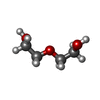+Search query
-Structure paper
| Title | A common solution to group 2 influenza virus neutralization. |
|---|---|
| Journal, issue, pages | Proc Natl Acad Sci U S A, Vol. 111, Issue 1, Page 445-450, Year 2014 |
| Publish date | Jan 7, 2014 |
 Authors Authors | Robert H E Friesen / Peter S Lee / Esther J M Stoop / Ryan M B Hoffman / Damian C Ekiert / Gira Bhabha / Wenli Yu / Jarek Juraszek / Wouter Koudstaal / Mandy Jongeneelen / Hans J W M Korse / Carla Ophorst / Els C M Brinkman-van der Linden / Mark Throsby / Mark J Kwakkenbos / Arjen Q Bakker / Tim Beaumont / Hergen Spits / Ted Kwaks / Ronald Vogels / Andrew B Ward / Jaap Goudsmit / Ian A Wilson /  |
| PubMed Abstract | The discovery and characterization of broadly neutralizing antibodies (bnAbs) against influenza viruses have raised hopes for the development of monoclonal antibody (mAb)-based immunotherapy and the ...The discovery and characterization of broadly neutralizing antibodies (bnAbs) against influenza viruses have raised hopes for the development of monoclonal antibody (mAb)-based immunotherapy and the design of universal influenza vaccines. Only one human bnAb (CR8020) specifically recognizing group 2 influenza A viruses has been previously characterized that binds to a highly conserved epitope at the base of the hemagglutinin (HA) stem and has neutralizing activity against H3, H7, and H10 viruses. Here, we report a second group 2 bnAb, CR8043, which was derived from a different germ-line gene encoding a highly divergent amino acid sequence. CR8043 has in vitro neutralizing activity against H3 and H10 viruses and protects mice against challenge with a lethal dose of H3N2 and H7N7 viruses. The crystal structure and EM reconstructions of the CR8043-H3 HA complex revealed that CR8043 binds to a site similar to the CR8020 epitope but uses an alternative angle of approach and a distinct set of interactions. The identification of another antibody against the group 2 stem epitope suggests that this conserved site of vulnerability has great potential for design of therapeutics and vaccines. |
 External links External links |  Proc Natl Acad Sci U S A / Proc Natl Acad Sci U S A /  PubMed:24335589 / PubMed:24335589 /  PubMed Central PubMed Central |
| Methods | EM (single particle) / X-ray diffraction |
| Resolution | 2.65 - 23.0 Å |
| Structure data |  EMDB-5793:  EMDB-5794:  PDB-4nm4:  PDB-4nm8: |
| Chemicals |  ChemComp-PEG:  ChemComp-HOH:  ChemComp-NAG: |
| Source |
|
 Keywords Keywords |  IMMUNE SYSTEM / IMMUNE SYSTEM /  Immune recognition / Immune recognition /  Antibody / Antibody /  Fab / Fab /  Immunoglobulin / Immunoglobulin /  Influenza hemagglutinin / Influenza hemagglutinin /  viral protein/immune system / Viral fusion protein / virus attachment and entry / viral protein/immune system / Viral fusion protein / virus attachment and entry /  viral protein-immune system complex / Immunoglobulin' viral protein-immune system complex / Immunoglobulin' |
 Movie
Movie Controller
Controller Structure viewers
Structure viewers About Yorodumi Papers
About Yorodumi Papers






